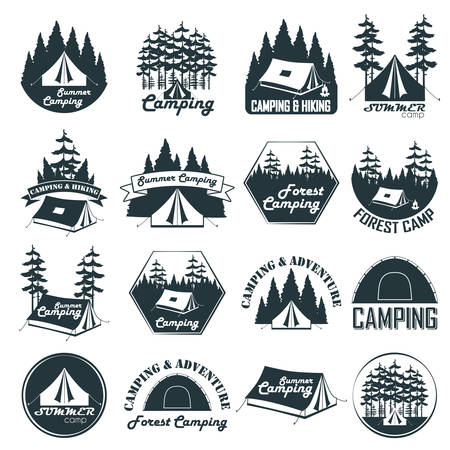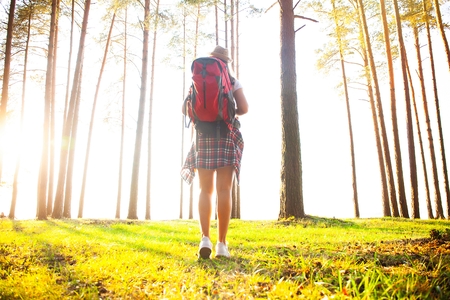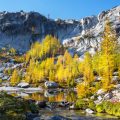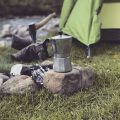Understanding Seasonal Weather Conditions
When planning a camping trip in the U.S., knowing what kind of weather to expect is key. Each season brings its own set of temperatures, precipitation patterns, and unique challenges depending on where you camp. Packing smart means understanding these differences so you’re comfortable and safe on your adventure.
How Seasons Affect Camping Across the U.S.
The United States has diverse climates, from hot deserts to snowy mountains. Here’s a quick overview of how the seasons impact popular camping regions:
| Region | Spring | Summer | Fall | Winter |
|---|---|---|---|---|
| Northeast | Cool, rainy, muddy trails | Warm, humid, bugs | Crisp air, colorful leaves, chilly nights | Snowy, cold, icy conditions |
| Southeast | Mild temps, thunderstorms | Hot, humid, afternoon storms | Mild days, cool nights | Mild to cold, occasional frost |
| Midwest | Unpredictable: rain or late snow | Hot days, severe storms possible | Mild, windy, early frosts possible | Cold with heavy snow in north areas |
| West (Rockies & Sierra) | Cool to warm days, snow at higher elevations | Warm days, cool nights in mountains, dry conditions | Crisp air, early snow at altitude | Very cold, deep snow above 6,000 ft |
| Southwest (Deserts) | Mild days, chilly nights, rare rain showers | Very hot days (over 100°F), cool nights | Pleasant temps, cooler evenings | Mild days, cold nights; occasional frost or snow at elevation |
| Pacific Northwest | Rainy and cool; muddy campsites likely | Mild temps but still wet; mosquitoes common near water | Drier weather; cool nights begin early fall | Damp and chilly with some snow inland or at elevation |
Main Considerations for Beginners:
- Temperature Swings: Even in summer, some regions have big drops at night—always pack layers.
- Precipitation: Spring and fall often bring rain or storms. Waterproof gear is a must in many areas.
- Bugs & Wildlife: Mosquitoes thrive in summer and near water; bring repellant.
- Elevation: Higher altitudes mean colder temps year-round—check forecasts before you go.
- Regional Hazards: Be aware of wildfire risks out west during summer and fall or sudden flash floods in desert areas.
2. Essential Gear for Every Season
When you’re new to camping, figuring out what gear you really need can feel overwhelming—especially since the weather isn’t always predictable. No matter the season, there are a few must-have items that should always be on your packing list. Here’s how to pick the right versions of these essentials to keep you comfortable and safe all year long.
Tents: Your Shelter in Any Weather
A good tent is your home away from home. For most U.S. locations, a three-season tent works well for spring, summer, and fall. These tents are designed to handle rain and moderate wind but may not stand up to heavy snow or extreme cold. If you’re planning any winter camping, look for a four-season tent, which offers stronger poles and better insulation.
| Tent Type | Best For | Key Features |
|---|---|---|
| Three-Season Tent | Spring, Summer, Fall | Lightweight, ventilated, rainfly included |
| Four-Season Tent | Winter or harsh conditions | Sturdy frame, less mesh, holds heat |
Sleeping Bags: Stay Warm (or Cool)
Your sleeping bag choice can make or break your trip. Always check the temperature rating before buying. For most U.S. campgrounds in summer, a sleeping bag rated for 35–50°F will do the job. For chilly spring or fall nights—or if you’re heading to the mountains—look for bags rated 20–35°F. If you plan to camp in winter, invest in a bag rated below 20°F.
| Sleeping Bag Rating | Best For |
|---|---|
| 35–50°F | Mild summer nights |
| 20–35°F | Cool spring/fall nights |
| Below 20°F | Winter camping or high elevations |
Portable Stoves: Hot Meals All Year Round
A portable stove is essential for cooking in any season. Single-burner stoves are compact and great for solo trips or backpacking. Two-burner propane stoves are popular for family camping—they’re easy to use and work reliably in most weather conditions. In winter or at high altitude, look for liquid-fuel stoves that perform well even when it’s freezing.
| Stove Type | Best For | Main Benefit |
|---|---|---|
| Single-Burner Canister Stove | Backpacking, solo trips (spring-fall) | Lightweight and compact |
| Two-Burner Propane Stove | Family/group car camping (all seasons) | Cooks multiple dishes at once |
| Liquid-Fuel Stove | Winter camping or high elevations | Performs well in cold temps |
Packing Tips for All Seasons
- Always bring a waterproof rainfly and ground tarp with your tent.
- If you’re unsure about the weather, layer your sleeping system with blankets or liners.
- Campsites in the U.S. can have sudden changes in temperature—pack extra clothing just in case.
- No matter what stove you choose, always pack extra fuel.
- If space allows, bring a small folding table for meal prep—it makes life much easier!
The Bottom Line on Year-Round Essentials
Packing smart means choosing versatile gear that matches both your trip plans and the unpredictable American outdoors. Stick with these essentials as your foundation, and you’ll be ready to take on every season with confidence!

3. Layering Clothing Like a Pro
When you’re packing for a camping trip in the U.S., the weather can be unpredictable, especially if you’re visiting places like national parks or mountain areas. Learning how to layer your clothing is key to staying comfortable from chilly mornings to hot afternoons and cool nights. Here’s what beginners should know about layering smartly for any season.
Why Layering Matters
Layering lets you adjust your outfit as temperatures change throughout the day. Instead of wearing one heavy item, several lighter layers trap heat when needed and can be removed when it warms up. This keeps you dry, cozy, and protected from wind or sudden rain.
The Three Essential Layers
| Layer | Purpose | Recommended Materials | Seasonal Tips |
|---|---|---|---|
| Base Layer | Wicks sweat away from skin | Synthetic (polyester), Merino wool | Always wear; opt for lightweight in summer, midweight in winter |
| Middle Layer | Adds insulation and warmth | Fleece, down, synthetic insulated jackets | Skip or go light in summer, use heavier options in fall/winter |
| Outer Layer | Protects from wind/rain | Waterproof/breathable shells (Gore-Tex) | Packed year-round; crucial during spring storms and winter snow |
Material Recommendations by Season
- Winter: Choose Merino wool for base layers and down or thick fleece for insulation. Waterproof shells are a must.
- Spring/Fall: Synthetic blends wick moisture and dry quickly; midweight fleece works well as a middle layer.
- Summer: Lightweight synthetic shirts keep you cool and dry; bring a light rain jacket just in case.
Packing Tips for Comfort All Year Round
- Avoid cotton—it holds moisture and takes forever to dry.
- Dress in easy-to-remove layers so you can adapt quickly to temperature swings.
- Packing an extra pair of socks and a beanie is never a bad idea—even summer nights can get chilly in some states!
- If space is tight, choose multi-functional pieces like zip-off pants or packable jackets.
4. Food and Hydration Planning
Keeping Your Meals Safe and Appetizing
No matter the season, safe and tasty meals make camping more enjoyable. In warm weather, pack perishable foods like meat, dairy, and eggs in a quality cooler with plenty of ice packs. In cooler months, you can use the outside air to help keep food chilled but still store it in sealed containers to avoid contamination. For all seasons, try prepping meals at home—think sandwiches, wraps, or precooked pasta dishes—to save time at camp.
Food Storage Tips to Avoid Wildlife Encounters
| Season | Storage Tip |
|---|---|
| Spring/Summer | Use bear-proof canisters or hang food bags from a tree branch at least 10 feet off the ground and 4 feet from the trunk. Never leave food unattended on picnic tables. |
| Fall/Winter | Still use bear-proof storage even if wildlife seems less active. Store all scented items (food, toothpaste) together. In freezing temps, keep some snacks inside your sleeping bag overnight so they don’t freeze solid. |
Extra Pro Tips:
- Always clean up food scraps right after eating.
- Double-bag trash and store it with your food away from your tent.
- Avoid bringing super fragrant foods like bacon if youre in bear country.
Hydration for Every Climate
Staying hydrated is crucial while camping, but how you do it depends on the season:
| Climate | Hydration Tip |
|---|---|
| Hot & Dry (Summer/Desert) | Drink water regularly—even before you feel thirsty. Bring extra water or a reliable filtration system since streams may be dry. |
| Cold & Wet (Fall/Winter) | You might not feel thirsty, but drink water often. Warm drinks like tea or hot chocolate count towards hydration and help keep you warm. |
| Mild (Spring/Fall) | Pace your intake and keep a reusable bottle handy. If hiking, stop every hour for a sip even if you’re not sweating heavily. |
Quick Hydration Checklist:
- Pack an insulated bottle to keep drinks hot or cold.
- If using natural water sources, always filter or boil water first.
- Add electrolyte tablets or powder if you’ll be sweating a lot or camping at high elevation.
5. Safety Tips and Seasonal Hazards
Staying safe is just as important as packing the right gear. Each season brings its own challenges, so knowing what to look out for can help you enjoy your camping trip with peace of mind. Here are some common hazards and what you can do to prepare:
Common Seasonal Hazards
| Season | Hazard | What to Watch Out For |
|---|---|---|
| Summer | Heat Exhaustion & Dehydration | Dizziness, headaches, nausea, excessive sweating, rapid pulse. High UV exposure. |
| Fall/Spring | Unpredictable Weather | Sudden rainstorms, strong winds, chilly nights. |
| Winter | Hypothermia & Frostbite | Shivering, confusion, numbness in fingers/toes, blue lips or skin. |
| All Seasons | Severe Storms & Wildlife Encounters | Thunderstorms, flash floods, bears or snakes (depending on region). |
Packing a Basic First Aid Kit
- Bandaids and sterile gauze pads for minor cuts and scrapes.
- Antiseptic wipes and antibiotic ointment to prevent infection.
- Pain relievers (like Tylenol or Advil) for headaches or aches.
- Tweezers and moleskin for blisters or splinters.
- A small emergency blanket for warmth in case of sudden cold weather.
- Sunscreen and insect repellent for sunburn and bug bites.
- An EpiPen if anyone in your group has serious allergies.
- A laminated card with basic CPR steps and important emergency numbers.
Know Your Local Emergency Resources
- Ranger Stations: Check the location of the nearest ranger station when you arrive at your campsite. They’re your go-to for emergencies or weather updates.
- Cell Service: Many campgrounds have limited service. Download offline maps and let someone know your plans before heading out.
- Weather Alerts: Sign up for local weather alerts on your phone. Bring a battery-powered weather radio if possible.
- Hospital Directions: Know the quickest route to the nearest hospital or urgent care clinic—just in case.
Packing Checklist for Safety by Season
| Item | Summer | Fall/Spring | Winter |
|---|---|---|---|
| Sunscreen & Hat | ✔ | ✔ | |
| Mosquito Repellent | ✔ | ✔ | |
| Poncho/Rain Gear | ✔ | ||
| Layered Clothing/Warm Hat & Gloves | ✔ | ✔ | |
| Thermal Blanket/Hand Warmers | ✔ | ||
| First Aid Kit (Essentials) | ✔ | ✔ | ✔ |
| Bottled Water/Electrolytes Packs | ✔ | ||
| Lip Balm (SPF recommended) | ✔ | ✔ | ✔ |
| Headlamp/Extra Batteries | ✔ | ✔ | ✔ |
| Pocket Knife/Multi-tool | ✔ | ✔ | ✔ |
Pro Tip:
If youre new to an area, ask locals about any unique risks—like poison ivy in the Midwest or rattlesnakes in the Southwest. The more you know, the safer (and more relaxed) youll be on your trip!


